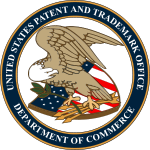By Donald Zuhn —
 Last week, the U.S. Patent and Trademark Office issued a notice in the Federal Register (85 Fed. Reg. 12222), in which the Office clarified its practice with respect to those situations where the Office will require additional information about whether a delay in seeking the revival of an abandoned application, acceptance of a delayed maintenance fee payment, or acceptance of a delayed priority or benefit claim was unintentional. In particular, for petitions decided on or after March 2, 2020, the Office will require additional information when a petition to revive an abandoned application is filed more than two years after the date the application became abandoned, a petition to accept a delayed maintenance fee payment is filed more than two years after the date the patent expired for nonpayment, or a petition to accept a delayed priority or benefit claim is filed more than two years after the date the priority or benefit claim was due.
Last week, the U.S. Patent and Trademark Office issued a notice in the Federal Register (85 Fed. Reg. 12222), in which the Office clarified its practice with respect to those situations where the Office will require additional information about whether a delay in seeking the revival of an abandoned application, acceptance of a delayed maintenance fee payment, or acceptance of a delayed priority or benefit claim was unintentional. In particular, for petitions decided on or after March 2, 2020, the Office will require additional information when a petition to revive an abandoned application is filed more than two years after the date the application became abandoned, a petition to accept a delayed maintenance fee payment is filed more than two years after the date the patent expired for nonpayment, or a petition to accept a delayed priority or benefit claim is filed more than two years after the date the priority or benefit claim was due.
The notice indicates that the provisions for the revival of an abandoned application, for the acceptance of a delayed maintenance fee payment, and for the acceptance of a delayed priority or benefit claim all provide that "[t]he Director may require additional information where there is a question whether the delay was unintentional" (37 C.F.R. §§ 1.137(b)(4), 1.378(b)(3), 1.55(e)(4), 1.78(c)(3) and (e)(3)). The notice also indicates that the reason for requiring additional information when a petition in the above instances is filed more than two years from the date an application became abandoned, a patent expired, or a priority or benefit claim was due "is to ensure that . . . the USPTO is provided with sufficient information of the facts and circumstances surrounding the entire delay to support a conclusion that the entire delay was 'unintentional,'" adding that "[a]n extended period of delay (i.e., more than two years from the date the application became abandoned, the patent expired, or a priority or benefit claim was due) in filing a petition to revive an application, accept a delayed maintenance fee payment, or accept a delayed priority or benefit claim . . . raises a question as to whether the entire delay was unintentional."
Practitioners or applicants who have had to revive an unintentionally abandoned application may be familiar with M.P.E.P. § 711.03(c)(II)(D), which states:
The Office does not generally question whether there has been an intentional or otherwise impermissible delay in filing an initial petition pursuant to 37 CFR 1.137(a) or (b), when such petition is filed: (A) within 3 months of the date the applicant is first notified that the application is abandoned; and (2) within 1 year of the date of abandonment of the application. Thus, an applicant seeking revival of an abandoned application is advised to file a petition pursuant to 37 CFR 1.137 within 3 months of the first notification that the application is abandoned to avoid the question of intentional delay being raised by the Office (or by third parties seeking to challenge any patent issuing from the application).
In view of the above, the Office's clarification may appear to be a little more permissive for revival of unintentionally abandoned applications. However, the Office indicates in the notice that:
The USPTO may revisit the two-year time period established in this notice for requiring an additional explanation as to whether a delay is unintentional at a future point and may adjust the time period based on an evaluation of whether a two-year time period is appropriate for requesting additional information when determining whether a period of delay is unintentional.
The notice also concludes by stating that "[n]othing in this notice should be taken as an indication that the USPTO will only require additional information in consideration of a petition . . . filed more than two years after [the date an application became abandoned, the date a patent expired, or the due date of the priority or benefit claim]." Instead, "[t]he USPTO may require additional information whenever there is a question as to whether the delay was unintentional."

Leave a comment